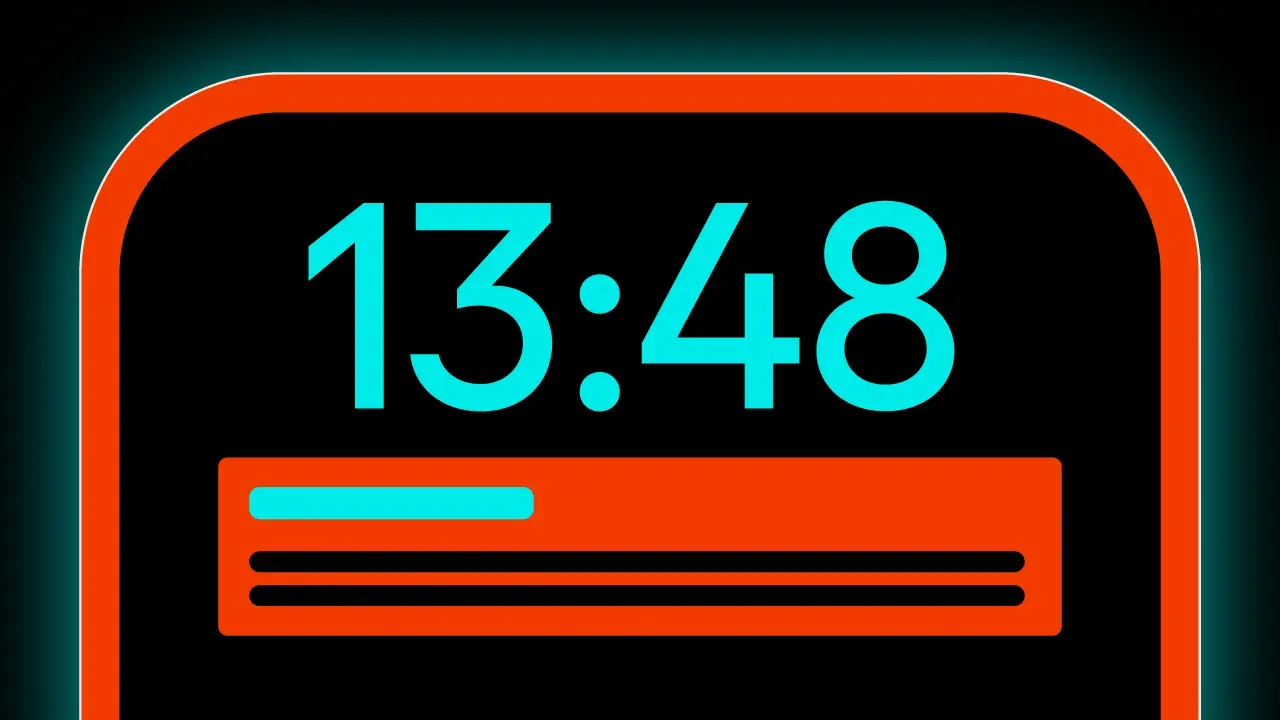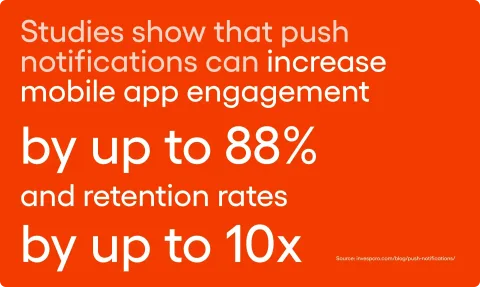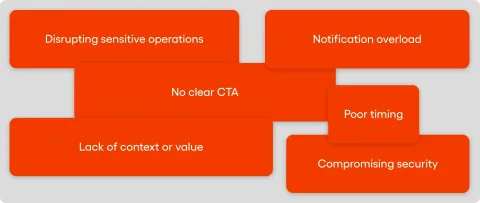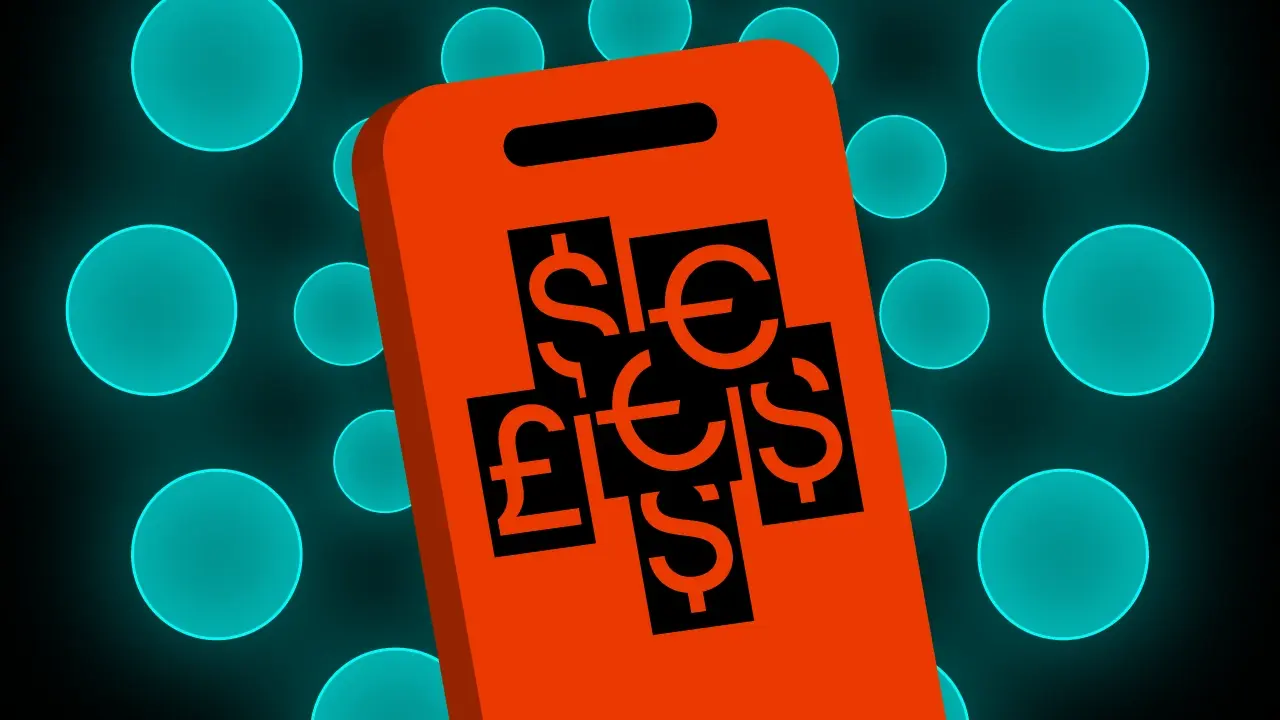Optimising engagement: Best practices for banking push notifications


Mobile banking apps have become an integral part of people’s daily lives, including financial decisions and operations. As users increasingly rely on their smartphones for money management, credit scoring, and daily payments, push notifications have proven themselves to be powerful tools for enhancing engagement and delivering important information on time. This article explores the best practices for implementing and optimising push notifications to improve financial organisations’ customer experience and help them drive engagement.
Table of contents
Overview of Push Notifications in Online Banking and Finance
Push notifications are short, targeted messages sent directly to an Android or iOS mobile device (phone or tablet), even when they’re not actively using the mobile banking app. These notifications serve multiple purposes, from alerting users about account activities (e.g. direct debit or standing orders’ execution) to providing security updates and promotional offers.
Push notifications play a crucial role in keeping app users informed and engaged with their bank and be aware of its services or new features. They promote immediate action and responsible behaviour, such as checking recent transactions or responding to discount proposals. Studies show that push notifications can increase mobile app engagement by up to 88% and retention rates by up to 10x, making them a valuable method for banks to maintain regular communications with their clients.

Understanding the Purpose of Push Notifications
Why are push notifications in banking apps so appreciated by money-related companies? Firstly, they have a significant impact on engagement. Statistics show that users who receive push notifications on their phone or other device are up to 65% more likely to return to the mobile app compared to those who disable them.
While push notifications are commonly associated with visible alerts, they can also perform background actions without interaction. For example, a push reminder can trigger the automatic display of a screen requiring action within the mobile app, enhancing the overall user experience.
A bank can utilise push notifications for various purposes, including:
- Transaction alerts: Notifying users of recent payments and transactions
- Security updates: Alerting app users to potential fraud or suspicious activities
- Promotional offers: Informing users about a new product or service
- Account reminders: Sending notifications about upcoming payments or low balances
It’s optional to receive notifications, and users have the ability to disable them within the mobile app features. It’s crucial to strike a balance between promotional alerts and essential notifications. Overwhelming app users with too many promotional pushes can lead to notification fatigue and potentially result in users disabling notifications altogether. Therefore, banks must design alternative solutions to ensure critical information reaches users even if push notifications are disabled. This may include in-app notifications, SMS alerts, or email communications.
Best Practices for Push Notifications
How can banks approach push notifications to achieve their objectives and keep customers satisfied? They can incorporate the strategies listed below:
User Permissions
Always allow app users to select notifications they will receive. Clearly explain what benefits the users will obtain if they enable push notifications and allow them to enable push notifications or disable them at all times.
Segmentation
Segment your customer base to deliver more relevant and personalised notifications. Consider factors such as account type, expected needs, transaction history, and spending behaviour to tailor your alerts effectively.
Personalisation
Use the person’s name and provide context-specific information to make notifications more engaging and relevant. You can also allow app users to select settings that promote personalisation.
Geofencing
Combine push notifications with geofencing, which is an innovative method of creating context-aware experiences. For instance, when a person is near a shopping centre or bank branch, AI can notify them about tailored purchase offers or information relevant to their location and preferences.
Timing and Frequency
Banking app users should receive notifications at appropriate times and avoid overwhelming users with too many messages. Consider time zones and user preferences when scheduling notifications.
Clear and Concise Messaging
Keep alerts short, clear, and to the point. Use simple language that users can quickly understand and act upon.
Call to Action (CTA)
Include a clear call to action in your notifications, guiding users on what steps to take next. This could make them check a recent payment, review a new money management feature, or select settings for increased security.
Increase Open Rates
Experiment with different message formats, emojis, and rich media, so the app users receive notifications that are more visually appealing and interesting to read.
Relevance and Value
Ensure each push notification provides value to the customer. Irrelevant or low-value notifications may lead to users disabling all push notifications.
A/B Testing
Continuously test different notification strategies, including message content, timing, and frequency, to optimise engagement rates.
Analyse Results
Regularly review notification performance metrics, such as open rates and conversion rates, to refine your strategy and improve effectiveness.
Compliance and Security Considerations
Adhere to data protection regulations and ensure that sensitive information is not displayed in notification previews. Use encryption and secure channels for transmitting notifications.
Common Mistakes to Avoid in Push Notification Strategy

When developing an online banking app, it’s crucial to consider the various states and contexts in which push notifications may be received. For example, if someone is in the middle of a sensitive operation, such as entering a BLIK code for a payment transaction, an incoming prompt on their device could disrupt the user’s flow.
Notification overload is another problem to be aware of. Sending too many alerts can lead to usage fatigue and increase the likelihood of users disabling notifications. Also, don’t send push notifications that lack context or value. Each message should be relevant and easily understood by the reader. Always provide a clear action to take in response to the notification. No clear CTA can make push notifications less effective.
Neglecting security is never the right path. Ensure that push notifications protect privacy or security. Avoid including sensitive information (e.g. accounts balances) in notification previews. The same goes for sending non-urgent notifications at inconvenient times, such as late at night or during typical working hours. Poor timing can be irritating and stressful for the app users.
Conclusion
Push notifications are a powerful tool for enhancing engagement and delivering timely, relevant information to mobile banking app users. By following best practices and avoiding common pitfalls, banks can optimise their push notification strategy to improve customer experience, increase mobile app usage, and drive engagement.
As you consider developing or improving your mobile banking app, remember that push notifications are just one aspect of a comprehensive mobile banking strategy. To create a truly effective and user-friendly mobile app, it’s essential to work with experienced developers who understand the nuances of banking technology and user experience design. Contact us to discuss your business needs and we will propose a tailored solution!




